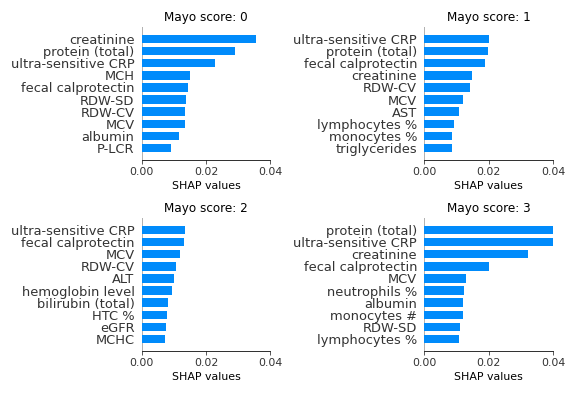P228 Machine learning models utilizing simple laboratory tests may assess endoscopic activity in ulcerative colitis
Kempinski, R.(1)*;Kraszewski, S.(2);Nizioł, P.(3);Neubauer, K.(4);
(1)Wroclaw Medical University, Gastroenterology and Hepatology, Wroclaw, Poland;(2)Wroclaw University of Science and Technology, Department of Biomedical Engineering- Faculty of Fundamental Problems of Technology, Wroclaw, Poland;(3)Wroclaw University of Science and Technology, Faculty of Mechanical Engineering, Wrocław, Poland;(4)Wroclaw Medical University, Gastroenterology and Hepatology, Wrocław, Poland;
Background
Together with the implementation of innovative therapies for inflammatory bowel disease, mucosal healing (MH) became the novel therapeutic goal. Currently, a golden standard for
evaluation of the colonic mucosa is an invasive and expensive colonoscopy. We propose here a machine learning (ML) based model as a noninvasive tool trained on biochemical patient data. Employed random forest technique used aggregation and randomization of predictors constituted of biochemical tests to accomplish a high degree of predictive accuracy reaching 95%. SHapley Additive exPlanations (SHAP) known from cooperative game theory were used to boost the interpretability of ML model based on additive feature importance across all possible predictors in the feature space.
Methods
The study group consisted of 252 ulcerative colitis patients hospitalized in theDepartment of Gastroenterology and Hepatology, Wroclaw Medical University. Routine laboratory test results and colonoscopy reports with the Mayo scores were collected. The data were processed with different ML classifiers. The most performant model was the random forest classifier. Then the SHAP model for the importance of consecutive clinical data was calculated.
Results
We found a set of particular biochemical predictors. Total protein, C-reactive protein, creatinine, and fecal calprotectin had the most significant impact on the prediction of endoscopic Mayo score, as shown in Figure 1.
Conclusion
Novel numerical models may predict the endoscopic activity of ulcerative colitis based on simple biochemical tests.


